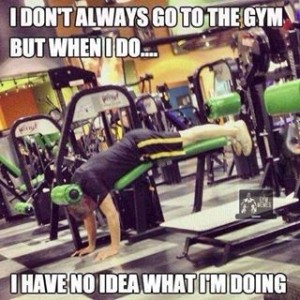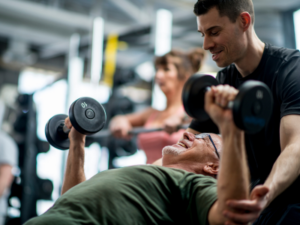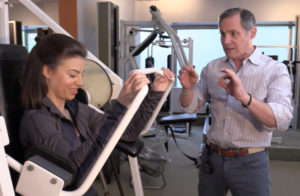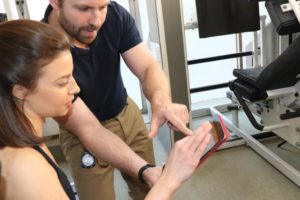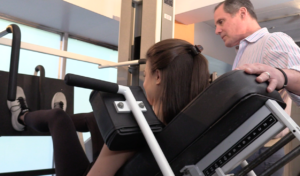The perfect workout does not exist.
There, I said it and I feel better to have that off my chest.
Inconclusive medical and scientific studies along with supporting media hype, drive what doctors prescribe, how coaches and personal trainers instruct, athletes train, and the average motivated man or woman engages in working out.
Though most medical professionals are educated and well intentioned, many are ill informed regarding exercise. An abundance of dramatically different workout protocols claim to be “the perfect workout” and each has its cheerleaders. Everyone has a different plan for the perfect workout, many in diametric opposition to one another. You may wonder, how is this possible?
The core of the problem rests in the definition of exercise. Let me offer an analogy. If the given definition of a pencil was “a writing instrument,” a pencil could be a charcoal stick, quill, ballpoint pen, even a computer. The definition of ‘exercise’ is equally broad. Given the wide-ranging definitions for exercise, the prevailing confusion and anarchy in the workout world is no real wonder.
To anoint any one protocol “the perfect workout,” we have to agree on the definition of exercise.
Definition of Exercise
Is exercise simply “bodily exertion for the sake of developing and maintaining physical fitness” (Webster’s Dictionary); or “[an] activity that requires physical or mental exertion, especially when performed to develop or maintain fitness?” (Free Dictionary)
These definitions are too broad, much like my earlier analogy of the pencil. My friend and professional comrade, Dr. Doug McGuff, best defines exercise in accord with my beliefs in his seminal book Body by Science. His definition, which I paraphrase, is: Exercise is a specific activity that stimulates a positive physiological adaptation that serves to enhance fitness without undermining health.
The positive physiological adaptation to which he refers is strengthening muscle. The definition covers the key point that exercise should build strength safely. With that requirement in mind, you can examine the various types of workouts more intelligently. Ask yourself whether the protocol does what it purports, while doing no harm in the process.
The actual goal of exercise has to be clear. Goals are as misguided as they are cluttered with non-related exercise outcomes. For example, enhancing my social life is not one of my reasons for exercising: see Get A Life. And certainly, I know intellectually beyond any doubt that I cannot exercise my way out of a bad diet: see The Exercise to Lose Weight Conundrum.
Let’s examine three types of workouts and their goals:
- Flexibility workouts, such as stretching and yoga, aim to improve muscle and joint range of motion, but measurable results are absent and, joint and muscle injuries are often caused in the process: see My Twist on Stretching
- Aerobic workouts, such as running, cycling and swimming, aim to push cardiovascular endurance. And, as you should now have come to expect, I take issue with their high risk for injury: see You Must Be Insane.
- And finally, even anaerobic workouts, such as weight training and high-intensity interval training, aimed to concentrate on muscle strength building, can often prove dangerous: see Should California Mom be Criticized (and this pertains to non-pregnant people as well).
The Studies
Most studies recommending ”the perfect workout” are faulty. For example, our need for heart-healthy cardio is a widely accepted belief, but countered by a multitude of reported injuries. Contradicting the pronouncement that running and high impact workouts cause hip and joint problems in older people, one recent study evidences fewer hip replacements and fewer incidence of osteoarthritis in a group of seniors that ran with the results from the study.
One of the things inherently wrong with this study, and with the majority of studies, is the lack of consideration of the individual genetics of the test pool. Non-responders and ultra-responders are going to experience radically different outcomes from the same stimulus. The findings offered by this study are flawed, hardly evidence to support, let alone encourage, running as a safe workout.
My verdict is still out on the safety of running, or any steady state workout. I’ve seen too many clients with long-term damage from running to accept a conclusion that running is safe, no matter what the study shows. The level of injuries from steady state exercise range from acute, like a sprain, to more insidious injuries that appear later and are chronic, including damaged joints and heart arrhythmias. I don’t believe that steady state workout improves your overall health – in fact, it seems to do the opposite, as discussed in these articles from Science Daily and the Boston Globe.
In his book, The Meaning Of It All, Richard Feynman wrote “in science if there is an exception to the rule, then the rule is wrong.” His words certainly apply in this instance.
My Hypothesis Regarding The Perfect Workout
Committed to exercising for decades, I have witnessed a wide range of programs; some yielding great results, many producing serious injuries. Building strength, safely and efficiently, is the driving principle and basis for my program the Power-of-10. I believe the key to health and fitness is strengthened muscle through intense muscular work that does not undermine your health in the process.
Early in my career, my life changed when I discovered the work of Ken Hutchins, the father of Super Slow, whose dissertation I devoured. I soon became a zealous advocate of his technique. I have to admit that my unbridled enthusiasm is now a little embarrassing. What I have since realized is that we don’t know everything and the degree of intensity is not a ‘one size fits all’ program. To be safe and effective, we have to leave room for individual differences.
Intensity improves certain health markers. The volume of workout is not the driver for muscle strength. The intensity of the workout ultimately provides measurable results. I passionately believe that any attempt to strengthen muscle should not be a risky proposition.
To sum up:
- Intensity over duration wins. Muscle strength is built with intensity and improves the body’s ability to absorb and tolerate glucose, reducing diabetes, stave off osteoporosis and other ailments caused by sarcopenia, which is age-related muscle loss.
- Intensity over duration wins again. Studies (here we go again) have shown that endurance athletes are at a high risk for heart arrhythmias. Not everyone is genetically programed to withstand steady state workouts without suffering injury.
- Slow is safer. I subscribe to Isaac Newton’s Law of Force. Force = Mass x Acceleration. If we reduce acceleration, we reduce force, thereby reducing the risk of injury. See ya later Cross Fit and P90X.
- The Perfect Workout has two key components: safety and measurable results. Strength is easily measured and results support the Power-of-10’s efficacy.
How We Measure Results
When working with a client, every InForm Fitness instructor wears a stopwatch and carries a clipboard that charts the clients’ workouts. The stopwatch ensures a consistent 10-second speed during both the lifting and lowering phases of the repetition, and the trainer records the time to muscular failure. If we raise the weight and you stay under load for the same time, speed and form, then you are stronger.
We offer accuracy not available when you lift weights at variable speeds, away from the careful eye and instruction of a professional. InForm Fitness instructors control the variables, such as seat positions, settings, and the sequence of exercises, all of which affect performance. In a controlled environment, we track and measure results, so that we are comparing your progress with controlled variables. This data, accumulated over months, allows us to give our clients an accurate picture of their progress in building strength. Even if this method of measuring strength seems primitive, it’s the best we have so far. The important results are what our clients experience and their stories of how their lives have improved. Watch the two new videos from our clients of their personal success that we have on our home page.
Good science may refute my core beliefs and force me to change my path, just as good science has led me here. Until then, I’ll continue…cautiously, of course.
For now, and as for the past fifteen years, my conviction is that the Power-of-10 protocol of exercise is, in fact, the perfect workout. No better way to exercise exists. I’m sincerely grateful to all those who have been willing to trust us and work hard! They have, as a result, realized the benefits first hand of using a technique that is as effective as the Power-of-10.
![]()


